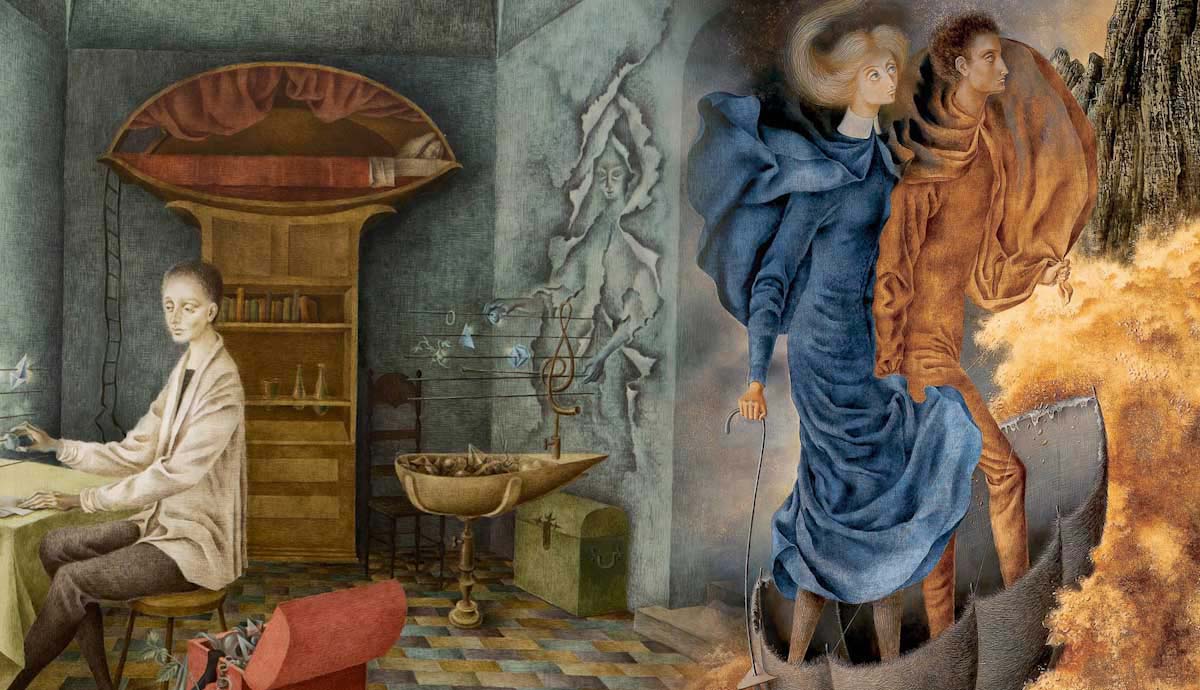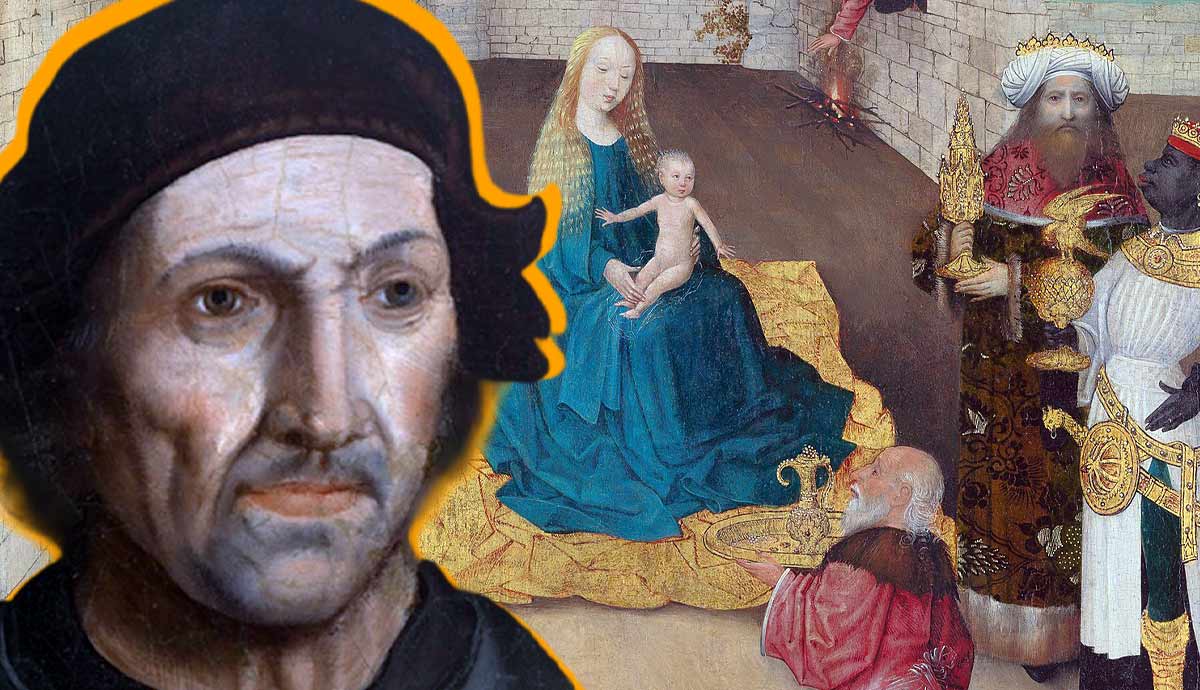
The great Spanish-Mexican artist Remedios Varo constructed her own metaphysical world to inhabit. Her magical Surrealist paintings contain a wide variety of characters, but the artist was also almost constantly portrayed in them. Through her self-portraits, Varo wanted to create an imaginary world that fit her better than the real one. Read on to learn more about the self-portraits made by the Surrealist women artist Remedios Varo.
Remedios Varo: The Surrealist Witch and the Forgotten Hero

Remedios Varo was born in Spain in the early years of the twentieth century and she became famous as one of the most prominent Mexican artists. However, she was almost forgotten as a Surrealist painter, since she was vastly different from her colleagues. In a male-dominated artistic movement, she forged her own path, relying on her inner processes and thoughts, building her imaginary world based on the works of the Old Masters and Medieval manuscripts.

Many of Remedios Varo’s works over the years contain elements of self-portraiture. Self-portraits are loud and bold announcements of oneself not only being able to create art but also being worthy of depiction. Remedios Varo was much less concerned with her pictorial immortality. She was more interested in constructing her private realm of existence—one that was more comfortable, forgiving, and adaptive than reality.
Childhood Rebellion

Remedios Varo never truly fitted into the borders of social expectations, feeling uncomfortable and restrained since her early years. A child of liberal parents, she nonetheless studied in a Catholic school, which annoyed her with its strict rules and indifference to nuances of human personality. Each student had to look, think, and behave the same, but Varo refused to give up on her imagination.
Years later, Remedios Varo reflected on her uneasy years in the Catholic school in a triptych that’s about confinement and ideas of escapism. A group of identical girls dressed in the same blue dresses move and work under constant surveillance of strict androgynous monk-like figures. All girls look like Varo, and are silent and compliant—all but one, who is breaking the fourth wall by staring directly at her audience beyond the canvas. She remains silent, yet her protest becomes more powerful in this silence. Her gaze does not seem like a loud cry for attention but a deeply rooted rejection of the world she is being forced to inhabit.

In one of the paintings, girls are shown while embroidering a mantle with trees, buildings, and humans. One of the girls—probably the same rebel from the first painting of the triptych—is discreetly adding an unexpected extra detail to her corner of the mantle. There, hidden in the folds of the falling mantle, are the figures of her and her lover, embracing each other. The silhouettes are almost invisible at first glance, turned upside down, and concealed by the rest of the composition. However, this mysterious male figure will reappear in the final painting of the triptych.
Gender & Androgyny

The final painting of the triptych, titled The Escape, shows the young rebel and her lover crossing the sea of fire on a boat made out of an umbrella. Many art critics interpreted this subject as the story of Varo’s marriage to her fellow art student Gerardo Lizarraga. Together, the two moved to Barcelona and then to Paris, where they explored avant-garde art and actively socialized with other artists, often ignoring everyday tasks. According to Varo, her mother occasionally visited them only to find piles of dirty dishes in every kitchen corner and clean them.
One often overlooked aspect of the painting hides in the position of bodies and their limits. Clothed in draped robes of contrasting colors, the figures stand close to each other, but this proximity hardly reminds one of a loving embrace. They are fusing into one organism, looking in one direction with facial expressions still and calm. The unification of the two genders in one androgynous being was a popular motif in art, particularly loved by the late nineteenth-century Symbolists. To them, the ideal spiritual being capable of accessing a higher level of knowledge and spiritual power had to carry both feminine and masculine energy.

Several years later, Varo and Lizarraga separated, but they never got a divorce and they remained in close contact for years. In many of Remedios Varo’s works, the figure of the Creator, the magician, or the alchemist—essentially, Varo herself—has no distinct gender markers. This demonstrates her ability to surpass the limits of the physical body and societal concepts.
Creative Process and Its Enemies

Remedios Varo’s most productive artistic period refers to the decades she spent in Mexico as a refugee escaping the war. Again, the narrative of constant captivity and restricted freedom revealed itself, taking more horrifying forms than before. Months before leaving France, she accidentally recognized her estranged husband in footage from a concentration camp. It took significant amounts of time and bribes to free him, and a new fear would plant itself inside Varo’s mind. Soon, she herself became a prisoner, arrested and detained by Nazi forces occupying France.
She never shared the details of her imprisonment, but her friends noticed a dark shadow of terror and trauma in the spirit of the sensitive Varo. She lost many friends and acquaintances—some died on the battlefield, while others were tortured to death for their anti-fascist views. She never wanted to go to Mexico—although one of her partners told her she should move there to fight her extreme entomophobia—but it was her only option since she was denied a visa for the USA requests.

In Mexico, she completely immersed herself in her imaginary world where she was free to explore, create, and become any creature she desired. She was at once the creator of her world and its brave explorer, never entirely sure what was hiding behind the next corner. Varo was a sorceress, a mystical midnight creature, and even a wise owl giving life to birds by drawing them with a string from her heart and a ray of light. However, sometimes in those self-portraits, we can see another Varo—a living woman who fights the grip of reality, bothered by intrusive thoughts. The voice of an unseen force comes from behind her back, interfering with the creative process, nurturing self-doubt, and feeding the impostor syndrome.
Remedios Varo: The Awakening of the Soul

Varo was an admirer of a Russian occult philosopher Pyotr Ouspensky. Ouspensky was one of the proponents of The Fourth Way, a radically new approach to spiritual self-development. According to Ouspensky, there were three traditional ways of cognition and spiritual development tied to the existing religions and practices, like yoga or monasticism. All of these could be learned through specific institutions and teachers, essentially turning the process of spiritual evolution into a systematic and hierarchic approach. They expect their followers to sacrifice their regular lives, committing them to the chosen path entirely, not allowing them to change their minds or leave.

The Fourth Way for Ouspensky was the free, self-regulated, and independent way of spiritual development that relied entirely on an individual’s own effort, without any gurus and masters. The Fourth Way is intangible, silent, and often unconscious, working with deep emotions and the inner life instead of external attributes. Ouspensky also believed that all human beings were born into a deep spiritual sleep and had to awaken their souls in their lifetime to access deeper knowledge, senses, and perception.
Remedios Varo’s self-portraits can be read as visual representations of these concepts. The artist’s avatars were always evolving and transforming, never staying too long in one particular form. They do not rely on any particular system of beliefs or symbols. The awakening of Remedios Varo’s spirit happens right in front of the viewer’s eyes, regardless of the time and place the artist was trapped in.










